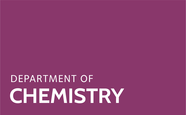Genome maintenance and stability rely on the repair of DNA double-strand breaks. Breaks can be repaired via the single-strand-annealing pathway mediated by the protein RAD52. RAD52 oligomerizes to rings that are thought to promote annealing. However, rings have only been observed at micromolar concentrations at which annealing activity is impaired. Thus, it is unclear which oligomeric form is responsible for annealing. We combined single-molecule mass photometry with biochemical assays to determine the in vitro oligomeric states of human RAD52. We found that RAD52 was mostly monomeric at lower nanomolar concentrations. With increasing concentration, RAD52 oligomerized and formed rings with a variable stoichiometry from heptamers to tridecamers consistent with an oligomerization model of noncooperative assembly coupled with preferential cyclization. Under conditions where hardly any rings were present, RAD52 already promoted single-strand annealing in vitro. Our findings indicate that in vitro single-strand annealing can be mediated by monomers and short oligomers of RAD52. The oligomerization model suggests that ring formation is similar to a phase transition whereby rings are a reservoir to replenish the monomer and short oligomer pool. This pool has a nearly constant concentration which may be optimal for annealing and would be independent, for example, of the amount of DNA damage, protein upregulation, or the cell cycle.
RAD52
,mass photometry
,homologous recombination
,single-strand annealing
,DNA repair




